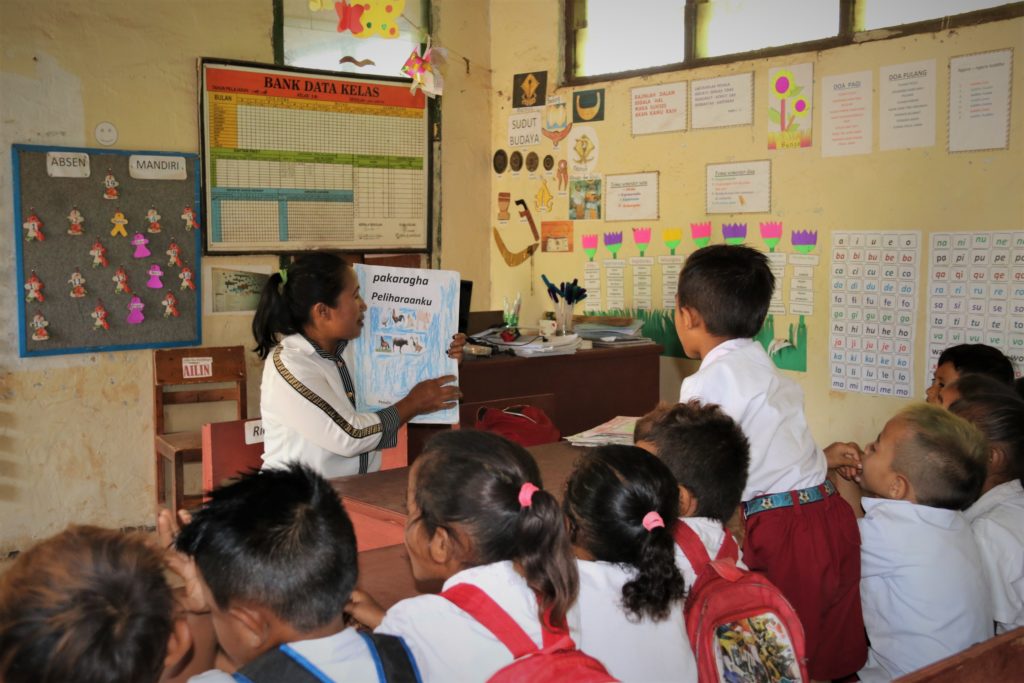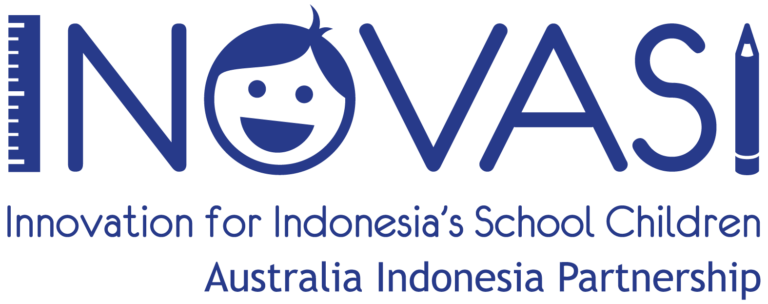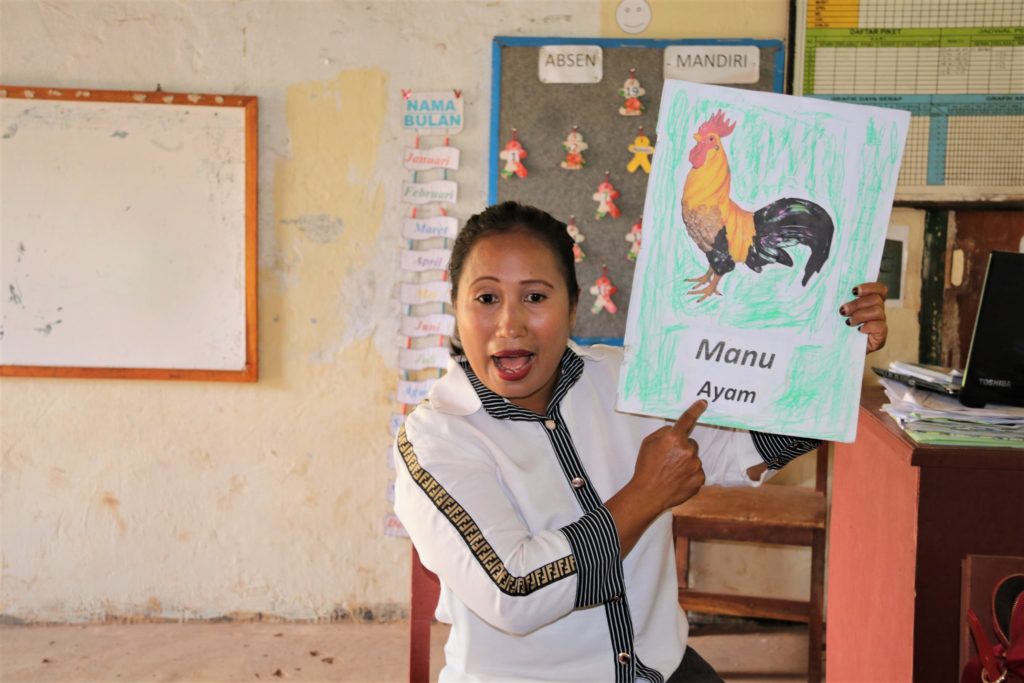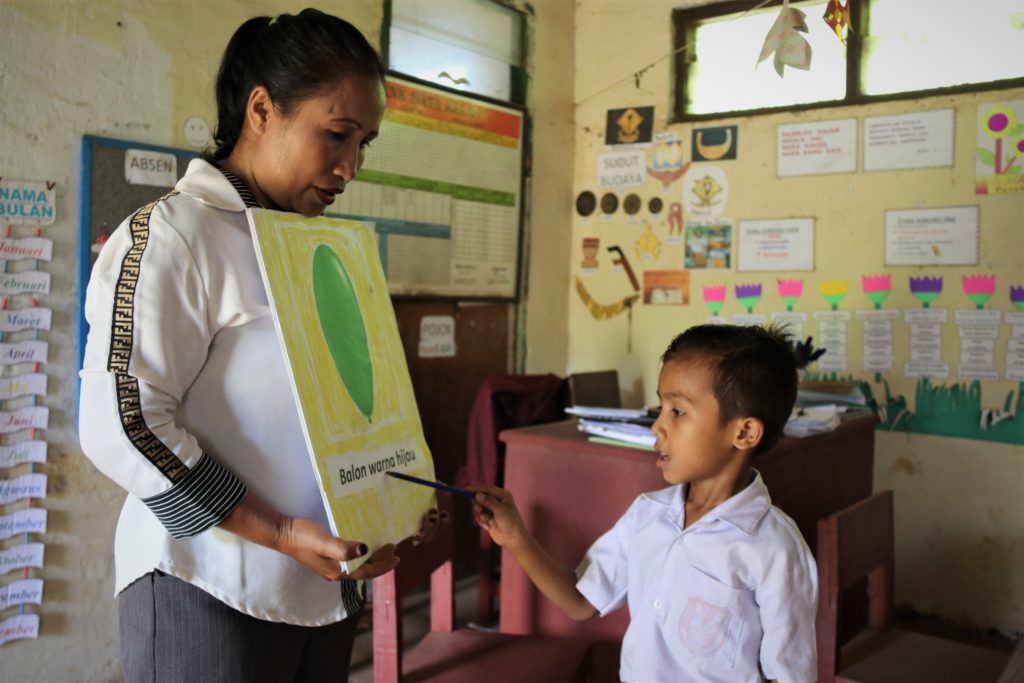
The absence of attractive learning aids makes it difficult for her to keep her students’ attention during class. It is understandable that there are still many schools located in remote areas, such as Apli’s school—as she is better known—that have not yet received or that do not have the tools to support learning in the classroom. Learning aids are a rarity at Apli’s school. Even if a learning aid is available—such as a book—it is usually not suited to the students’ level.
Being Creative in Making Learning Aids
After attending the Teacher Working Group (Kelompok Kerja Guru, or KKG) for Early Grade Literacy training, Apli got an idea of how to overcome the problem she was facing. In one of the training sessions, Apli learned how to make a learning aid called the Big Book. The name Big Book derives from the book’s size, which is larger than the books that are usually used for learning in class. What is interesting about the Big Book is that a teacher can create this type of book by using simple materials. Another interesting thing about the Big Book is that its content can be adjusted to the local context so that students can quickly understand the subject they are learning.
As Apli had never seen a book like the Big Book before, she initially did not think that she could create one by herself and use it to help her students learn. After the KKG training, she and the other teachers from SDN Lokory requested that the school principal and school treasurer provide cardboards and markers.
Apli and her fellow teachers developed stories that touch on the daily lives of the children in Sumba, such as family, traditional clothing, traditional houses, and local varieties of fruit, all of which are related to the conditions and culture in Sumba, especially West Sumba. The collaboration between Apli and the other teachers resulted in at least 20 units of Big Books that contain different stories and are specific to the level at which each one is being used.
In August 2019, Apli created her own Big Book to use in her class. To date, she has developed 14 units of Big Books that are tailored to the learning themes. In order to better adapt to the local context, Apli has even used the local language for these Big Books.
Apli uses the Big Book three to four times a week; however, the children often read the Big Books outside of class hours. During the Teaching and Learning Activities (Kegiatan Belajar dan Mengajar, or KBM), the students use the Big Books for reading together. For this activity, Apli selects a Big Book with content the students are already familiar with and that they can read, for example, a book about varieties of fruit. In addition to reading together, Apli uses the Big Book to do modeled reading. During a modeled reading activity, Apli reads the words in the book and the students follow after her. What is interesting is that students who are already quite fluent in reading the book act as role models, reading the contents of the book while the other students follow along.
In order to see whether the students have understood the lesson, Apli usually asks them to recount what they have read and asks them questions like the following:
Apli: “What is this a picture of?” (pointing at the picture in the Big Book)
Students: “Baju (cloth).” (simultaneously and enthusiastically)
Apli: “What is the first letter of baju?”
Students: “Beeeeeeee…” (the sound of the letter B)
According to Apli, using the Big Book has proved to be successful in improving the students’ enthusiasm to learn. The children now diligently go to school and look at the Big Books in the classroom. There are even students who try to mimic their teacher when they are reading the Big Book to their peers.
The students’ passion for learning has contributed to the development of their abilities. For example, at the start of the assessment in August 2019, all grade 1 students of the 2019/2020 school year were at the level of recognizing the letters of the alphabet. In the following four months, there were only five students who were still at this level, and there were even some others who had reached the reading comprehension level. The development of Apli’s students can be seen in the following table:
| Reading ability level | Number of students | |
| August 2019 | November 2019 | |
| Reading letters | 18 students | 5 students |
| Reading syllables | 0 students | 3 students |
| Reading words | 0 students | 7 students |
| Reading fluently | 0 students | 2 students |
| Reading comprehension | 0 students | 1 student |
Learning for Students with Special Needs
The following is an interesting story when Apli first taught the grade 1 students in the previous school year (now the students are in the grade 2). Apli noticed that there was a student who simply came in every day, sat down, remained quiet, and then went home after the last lesson. After noting this student’s routine, Apli was not sure whether the student could transition to the next grade. At that time, Apli did not know about the Big Books or other learning aids aside from textbooks. After creating a Big Book, Apli used it to provide special guidance to that particular student. Apli did not expect that the student would succeed in achieving the word reading level and transition to the grade 2.
“By having the Big Book, the students have become more engage. Their curiosity increased rapidly, and this has made the class more interactive. It has also prompted me to think more creatively in order to develop other Big Books that can help the students learn to read more quickly,” said Apli.
Looking at the achievements so far, Apli is very happy and even more motivated to provide additional creative learning aids and apply more methods. She hopes that someday a Big Book like the one she created can be printed for wider use.








